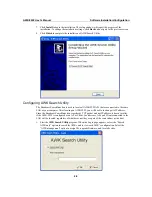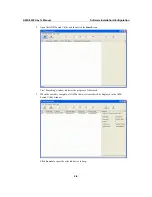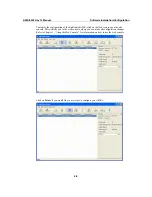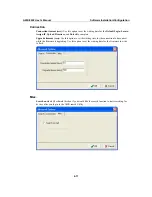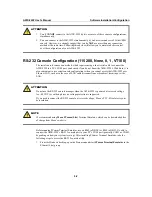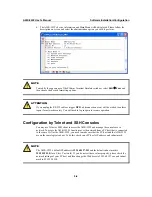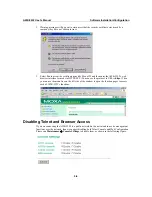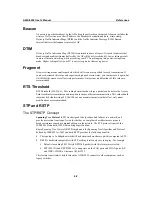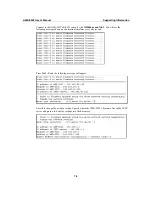
AWK-5222 User’s Manual
References
6-2
Beacon
A beacon is a packet broadcast by the AP to keep the network synchronized. A beacon includes the
wireless LAN service area, the AP address, the Broadcast destination address, a time stamp,
Delivery Traffic Indicator Maps (DTIM), and the Traffic Indicator Message (TIM). Beacon
Interval indicates the frequency interval of AP.
DTIM
Delivery Traffic Indication Map (DTIM) is contained in beacon frames. It is used to indicate that
broadcast and multicast frames buffered by the AP will be delivered shortly. Lower settings result
in more efficient networking, while preventing your PC from dropping into power-saving sleep
mode. Higher settings allow your PC to enter sleep mode, thus saving power.
Fragment
A lower setting means smaller packets, which will create more packets for each transmission. If
you have decreased this value and experience high packet error rates, you can increase it again, but
it will likely decrease overall network performance. Only minor modifications of this value are
recommended.
RTS Threshold
RTS Threshold (256-2346) – This setting determines how large a packet can be before the Access
Point coordinates transmission and reception to ensure efficient communication. This value should
remain at its default setting of 2,346. When you encounter inconsistent data flow, only minor
modifications are recommended.
STP and RSTP
The STP/RSTP Concept
Spanning Tree Protocol
(STP) was designed to help reduce link failures in a network, and
provide protection from loops. Networks that have a complicated architecture are prone to
broadcast storms caused by unintended loops in the network. The STP protocol is part of the
IEEE802.1D standard, 1998 Edition bridge specification.
Rapid Spanning Tree Protocol
(RSTP) implements the Spanning Tree Algorithm and Protocol
defined by IEEE802.1w-2001 standard. RSTP provides the following benefits:
y
The topology of a bridged network will be determined much more quickly compared to STP.
y
RSTP is backward compatible with STP, making it relatively easy to deploy. For example:
Defaults to sending 802.1D-style BPDUs if packets with this format are received.
STP (802.1D) and RSTP (802.1w) can operate on the LAN ports and WLAN ports (AP
and WDS1-WDS8) of the same AWK-5222.
This feature is particularly helpful when the AWK-5222 connects to older equipment, such as
legacy switches.

